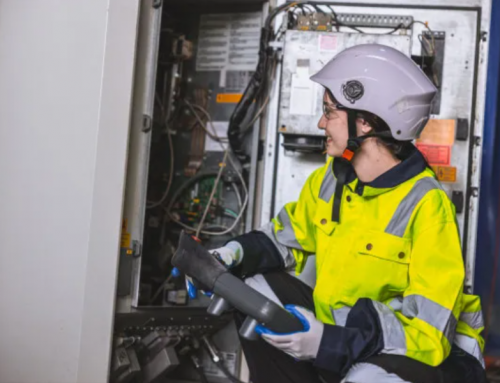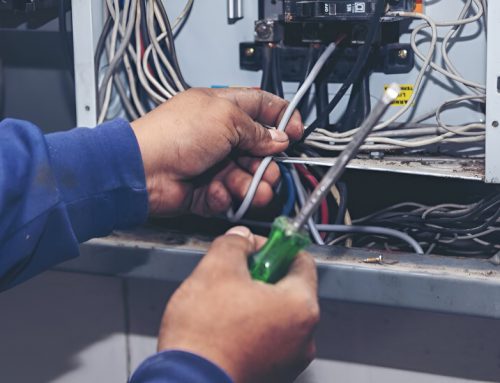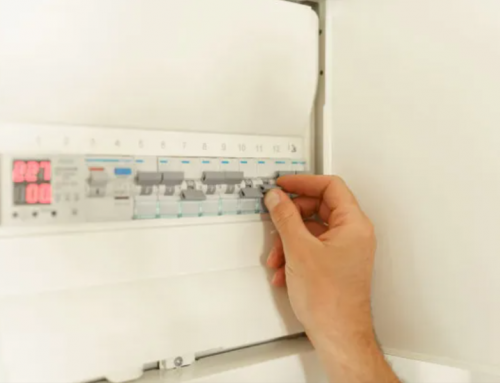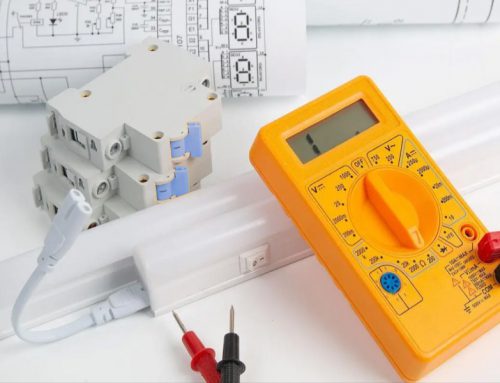How long do you have to wait to reset a circuit breaker?
1.Introduction.
In this article, we will discuss the concept of circuit breakers, why circuit breakers need to be reset, and the time required for circuit breaker reset. In addition, we will also introduce the steps to reset the circuit breaker and analyze the methods for calculating and referencing the waiting time for circuit breaker reset. In order to better illustrate these issues, we will conduct a detailed analysis based on actual cases.
2.Circuit breaker.
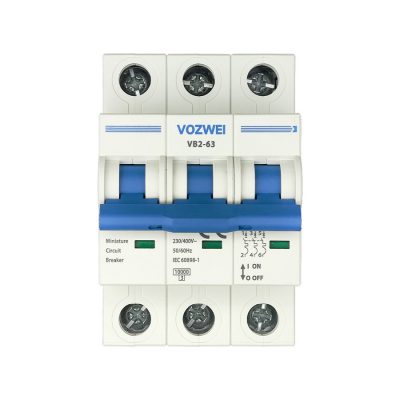
A circuit breaker is an electrical device used to protect circuits. It automatically trips and cuts off the current in the event of overload, short circuit, or ground fault in the circuit, in order to protect the safety of the circuit and electrical equipment. The circuit breaker protects the circuit and equipment by controlling the current level in the circuit and the disconnection action in case of abnormal current.
A circuit breaker is an electrical switching device used to cut off current to protect electrical equipment in the event of a power system malfunction. Its main functions include the following:
(1). Overload protection: When the current in the circuit exceeds the set value, the circuit breaker can automatically trip to prevent damage to wires, cables, and electrical equipment due to overload.
(2). Short circuit protection: In the event of a short circuit in a circuit, the circuit breaker can quickly cut off the current, prevent excessive current generated by electrical equipment and wires, and thus avoid fire and other safety accidents.
(3). Ground fault protection: When a ground fault occurs in a circuit, the circuit breaker can detect abnormal current and cut off the circuit to protect personal safety and equipment from damage.
According to different usage scenarios and protection objects, circuit breakers can be divided into the following categories:
(1). Low voltage circuit breakers: mainly used in low-voltage power systems, such as homes, commercial buildings, and industrial equipment. They usually have fast disconnection and reliable overload and short circuit protection functions.
(2). Medium voltage circuit breaker: suitable for medium voltage power systems, such as urban distribution networks, power stations, and large industrial power systems. This type of circuit breaker typically has higher current capacity and more complex protection functions.
(3). High voltage circuit breaker: used in power systems such as high-voltage transmission and substations. High voltage circuit breakers can disconnect high voltage and high current, protecting the stable and reliable operation of the power system.
(4). DC circuit breaker: dedicated to DC power systems, such as power transmission, electric vehicles, and solar power generation.
In practical applications, circuit breakers are widely used in various scenarios, including but not limited to the following aspects:
(1). Household and commercial buildings: used to protect wires, sockets, electrical equipment, etc., ensure normal use, and prevent fires and electric shock accidents.
(2). Industrial production lines and equipment: used to protect industrial machinery, control systems, and electrical equipment, ensuring the reliable operation of the production process.
(3). Power system and substation: used to protect key equipment such as power transmission lines, transformers, and generators to ensure the safe and stable operation of the power grid.
In short, circuit breakers, as an important electrical protection device, play a crucial role in circuit overload, short circuit, and ground fault situations. By timely cutting off current, protecting electrical equipment and personal safety, circuit breakers play an indispensable role in various fields.
3.Reset circuit breaker.
Q: What is resetting a circuit breaker? How to reset the circuit breaker?
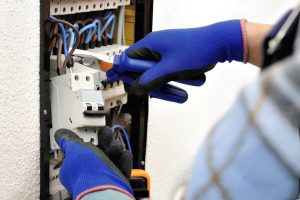
A: Resetting a circuit breaker refers to the process of automatically tripping the circuit breaker and reconnecting the current in the event of abnormal conditions such as overload, short circuit, or ground fault. In most cases, resetting the circuit breaker should be completed by professional personnel to ensure safety and correctness. The steps and precautions for resetting the circuit breaker will be explained in detail below.
(1). Confirm the cause of the malfunction
Before resetting the circuit breaker, it is first necessary to confirm the cause of the fault. Overload, short circuit, and ground fault can all cause the circuit breaker to trip. If it is determined that it is an overload problem, it can be solved by reducing the load; If it is a short circuit problem, it is necessary to eliminate the cause of the short circuit fault. Before turning on the power again after repairing the fault, the fault must be eliminated.
(2). Turn off all electrical equipment
Before resetting the circuit breaker, all electrical equipment must be turned off to prevent them from restarting when the circuit breaker is reset. This not only causes excessive instantaneous load on the power grid, but also damages equipment and circuits. After turning off all electrical equipment, it is also necessary to wait for it to fully discharge before proceeding with the next step.
(3). Manually switch the circuit breaker to the “closed” state
Now it is possible to manually switch the circuit breaker to the “off” state to ensure that it has been disconnected from the power supply. When the circuit breaker is cut off, its trip button should be in the middle position. If it is below or above, it indicates that it has switched to the “On” or “Overload” state and further confirmation is required.
(4). Check and clear the circuit breaker
After manually switching the circuit breaker to the “closed” state, it needs to be checked and cleared. Use a clean cloth or brush to remove dirt and oxides from the connectors and contacts of the circuit breaker. This can increase the contact area and avoid problems such as corrosion and local heating.
(5). Manually switch the circuit breaker to the “open” state
After completing the above steps, you can attempt to manually switch the circuit breaker to the “On” state. But before carrying out this operation, it is necessary to solve the problem and adjust the load or correct short circuit faults. When manually switching the circuit breaker to the “open” state, it is necessary to press and hold the trip button to restore normal operation.
(6). Verify successful reset
Finally, it is necessary to verify whether the reset was successful. Turn on all electrical equipment and restart them, then check if the current returns to normal. If it returns to normal, it indicates a successful reset of the circuit breaker.
In summary, resetting the circuit breaker requires attention to a series of steps and safety precautions. In order to ensure the correctness and safety of the operation, it is recommended that professional personnel carry out the operation at the appropriate time and correctly identify and solve the cause of the fault. If there are any doubts or uncertainties, please do not operate without authorization.
Q: Why reset the circuit breaker? What is the reason for not resetting.
A: Resetting a circuit breaker is to restore its normal working state, and usually requires a reset operation after the circuit breaker trips. Not resetting the circuit breaker may cause the following issues:
(1). Protection function failure: When the circuit breaker trips, it means that there is a fault or abnormal situation in the circuit, and resetting the circuit breaker can reactivate its protection function. If the circuit breaker is not reset, it will not be able to function again, which may cause circuit faults to continue or further exacerbate, posing potential risks to electrical equipment and personal safety.
(2). Electrical equipment damage: When the circuit breaker trips, it interrupts the current supply to protect the electrical equipment from overload or short circuit damage. If the circuit breaker is not reset, electrical equipment will not be able to receive power supply, resulting in abnormal operation or even damage.
(3). Circuit interruption: After the circuit breaker trips, the circuit is interrupted, meaning no current passes through. If the circuit breaker is not reset, the circuit will remain in an interrupted state, and electrical equipment cannot be used, which may lead to production line downtime, data loss, or other impacts.
(4). Increased fire risk: One of the functions of circuit breakers is to prevent overloading of wires and electrical equipment, thereby reducing the risk of fire. If the circuit breaker is not reset and the circuit is still in an overload state, wires and electrical equipment may be thermally damaged due to prolonged overload, increasing the risk of fire.
(5). Unable to restore power supply: In some cases, when the circuit breaker trips, it is necessary to manually or automatically reset the circuit breaker to reconnect the circuit and restore power supply. If the circuit breaker is not reset, the power supply will not be restored, resulting in a power outage.
In summary, resetting the circuit breaker is to ensure its normal operation and restore power supply. Failure to reset the circuit breaker may result in protection failure, electrical equipment damage, circuit interruption, increased fire risk, and inability to restore power supply. Therefore, it is very important to reset the circuit breaker in a timely manner in appropriate circumstances to ensure the safe operation of the circuit and electrical equipment.
4.Calculation and reference value of waiting time for resetting circuit breakers.
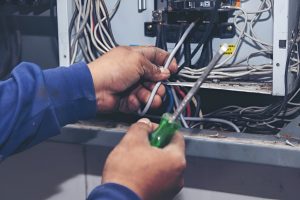
The waiting time for resetting the circuit breaker can be calculated based on the following factors:
(1). Circuit breaker type: Different types of circuit breakers have different reset time requirements. Generally speaking, the reset time of low-voltage circuit breakers is relatively short, usually between tens of milliseconds and a few seconds. The reset time of high-voltage circuit breakers may be longer, which may take several minutes or longer.
(2). Overload degree: The greater the overload degree, the longer the reset time after the circuit breaker trips. In an overload state, the circuit breaker requires a certain amount of time to cool down and restore normal operating temperature to ensure safe operation.
(3). Environmental temperature: The environmental temperature also affects the time to reset the circuit breaker. Higher ambient temperatures can cause the circuit breaker to reach an overheating state faster, requiring longer time for cooling and resetting. On the contrary, lower ambient temperatures may cause the circuit breaker to cool faster and have a relatively short reset time.
(4). Circuit breaker design parameters and manufacturer regulations: Different circuit breaker manufacturers will determine appropriate reset time ranges and reference values based on product characteristics and safety requirements during the design and production process. Users should determine the appropriate reset time based on the model of the circuit breaker and the regulations in the technical manual provided by the manufacturer.
It should be noted that the waiting time for resetting the circuit breaker should not be too arbitrary. If the reset time is too short, the circuit breaker may still not be fully restored, leading to another trip or equipment malfunction. On the contrary, if the waiting time is too long, it may cause circuit interruption for too long, affecting production and use.
Therefore, in practical operation, the following general reset time range can be referred to:
Low voltage circuit breaker: usually between tens of milliseconds and a few seconds.
High voltage circuit breaker: usually between a few minutes to more than ten minutes.
Finally, as the specific situation and manufacturer requirements of each circuit breaker may vary, to ensure safety and normal operation, it is important to refer to relevant technical manuals and consult professionals to determine the accurate reset time.
5.Case Study.
The following is a practical case that explains how to reset a circuit breaker:
Assuming an overload occurs in a certain circuit of a factory, causing the circuit breaker to trip. To solve the problem, it is necessary to reset the circuit breaker.
The steps are as follows:
(1). Confirm the cause of the fault: By checking the circuit and equipment, confirm that overload is the cause of the circuit breaker trip.
(2). Turn off all electrical equipment: Before resetting, ensure that all equipment related to the circuit is turned off to avoid restarting when resetting the circuit breaker.
(3). Manually switch the circuit breaker to the “closed” state: Use a handle or operating mechanism to manually switch the circuit breaker to the disconnected circuit state.
(4). Check and clean the circuit breaker: Use a clean cloth or brush to clean the connectors and contacts of the circuit breaker to remove dirt, oxides, etc.
(5). Waiting time: According to the type of circuit breaker and the manufacturer’s regulations, wait for an appropriate time to ensure that the circuit breaker returns to normal operating temperature.
(6). Manually switch the circuit breaker to the “open” state: After the waiting time has ended, attempt to manually switch the circuit breaker to the state of re closing the circuit.
(7). Verify successful reset: Turn on all electrical equipment and let them restart, then check if the current returns to normal. If no further tripping occurs, it indicates that the circuit breaker has successfully reset.
In practical operation, the following precautions should also be noted:
(1).Before performing any operation, be sure to cut off the power supply and ensure that all equipment is fully discharged.
(2). Do not use a cloth or brush with static electricity to clean the circuit breaker to avoid sparks or damage to the equipment.
If you are unsure or have any questions about the operation process, please seek professional guidance and assistance.
The above is a simple practical case of resetting a circuit breaker, and the specific operation steps may vary depending on different circuit breaker types and manufacturer’s regulations. In actual operation, please refer to relevant technical manuals and consult professionals to ensure safety and correct operation.
Conclusion
Finally, resetting the circuit breaker can help restore the power supply function of the circuit, protect the safety of equipment and personnel, and ensure the stable operation of the power system. Resetting the circuit breaker correctly is one of the necessary steps to maintain the normal operation of the circuit. When resetting the circuit breaker, multiple factors such as circuit breaker type, overload degree, and environmental temperature should be considered to ensure reasonable waiting time. Users should refer to official technical manuals and regulations to avoid waiting times that are too short or too long, which may affect the normal operation of the circuit.
References
Appendix
Circuit:The complete closed path through which a current can pass.
